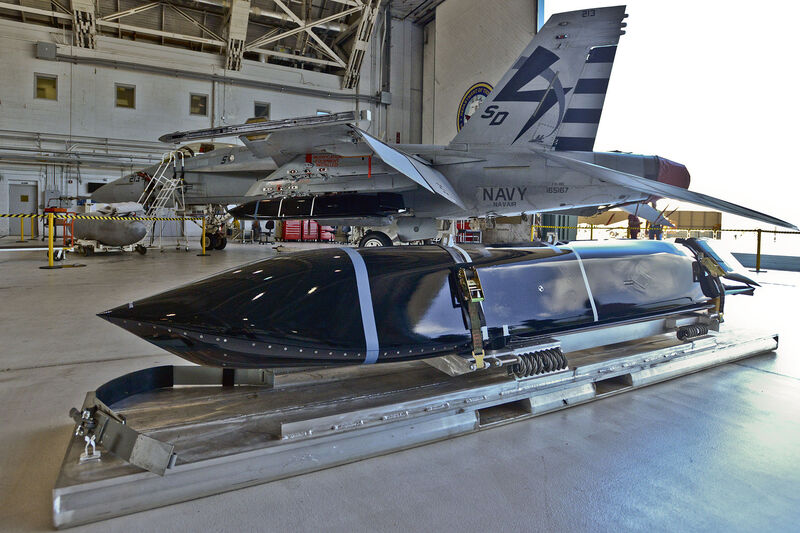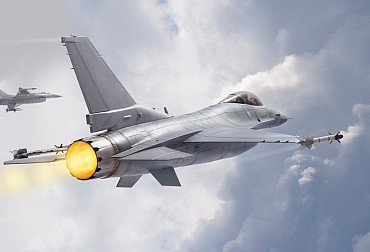LRASM passed the historic test with four missiles launched
Lockheed Martin and the US Navy a announced successful test of the AGM-158C Long-Range Anti-ship Missile (LRASM) against unknown target/s. It is not known where or when the test took place, but still, it is a major milestone for the US Navy and LRASM which could become a crucial weapon during the next war.
In the beginning of April, Lockheed Martin, the manufacturer of the LRASM missiles, together with US NAVY conducted what is called a historic test during which two US Navy F-18 Super Hornets fired four AGM-158C LRASM. The press release describes the test as historic because of the complexity and number of missiles launched simultaneously. Unfortunately, it was not disclosed where or when the test took place. It is also not known which version of the LRASM was launched. There are currently at least two main versions of LRASM under development. The original variant derived from the Joint Air-to-Surface Standoff Missile (JASSM) and the newest variant dubbed LRASM-ER which indicates that this version could have range of approximately 1000 km, similarly to the JASSM-ER. Although much of the so-called historic test is not known, both the US Navy and Lockheed Martin described the test as similar to the way these missiles will be launched during real combat missions. However, it is almost certain that the US Navy tested the scenario of a potential war with China because LRASM and JASSM missiles will eventually play one of the most significant roles in this conflict, as the article will discuss later.

Originally, the aforementioned version dubbed LRASM-ER could have a capability to strike land targets, which could be a major boost in both US Air Force and US Navy capabilities to strike land targets on the southeastern coast of China in case of great power war. However, there are currently no plans to equip LRASM-ER with land-attack capability. On the other hand, the latest version of LRASM could have more advanced datalink and other improvements. The US Navy plans to integrate the newest LRASM into the F-18 Super Hornet first. LRASM – ER is scheduled to be initially operationally capable in 2026.
The LRASM is a derivate from the JASSM-ER and intended to strike ships in a contested electromagnetic environment. It has a range of 320 kilometers, and it carries the 450 kg warhead. JASSM – ER is a conventional air-launched standoff missile launched from various types of aircraft, including a B-52 Stratofortress bomber, F-15E Strike Eagle, or F-16C/D Fighting Falcon. The F-35 Lightning II could carry JASSM-ER externally. The basic version, the JASSM, has a range of 370 kilometers. The extended-range version has range of approximately 1000 kilometers. There is also a 'beast version' called JASSM – XR which stands for Extreme Range, which has a range of 1800 km. If there is LRASM -XR, similar to the JASSM-XR, it could give US Air Force and US Navy another capability boost to launch these missiles from safe distance to destroy Chinese invasion fleet attacking Taiwan, for instance.
LRASM will be one of the key weapons systems in a potential war scenario with China in the Western Pacific region. As recent wargames conducted by the Center for Strategic and International Studies show, LRASM inventories (currently hundreds globally) could be depleted in the first weeks of the conflict with China. LRASMs are modern stealth missiles that could wreak havoc on Chinese defenses. This is also a reason why the missile manufacturer, Lockheed Martin, opened a new production line for LRASM/JASSM/JASSM-ER. Current annual production is approximately 500 LRASMs and JASSMs annually. The manufacturer is currently working to at least double the possible annual production to 1000 and to expand the portfolio of aircraft that can carry and launch LRASMs. Currently, only Air Force B-1 Lancer bombers and Navy F-18 Super Hornets are capable of launching LRASMs. Nevertheless, there is ongoing research and development on LRASM integration to F-35 Lighting II and P-8 Poseidon antisubmarine warfare aircrafts. Lockheed Martin is also looking into the possibility of launch LRASM from a HIMARS vehicle and even a Mk 41 Vertical Launching System.
As shown above, US Navy and Air Force work towards major boost of their anti-ship and land-attack capability. In the context of potential war with China, this should be wake-up call for Europe to rearm and also think about the role and own inventories of air-launched Taurus cruise missile or to start development of ground-launched version of Taurus.









